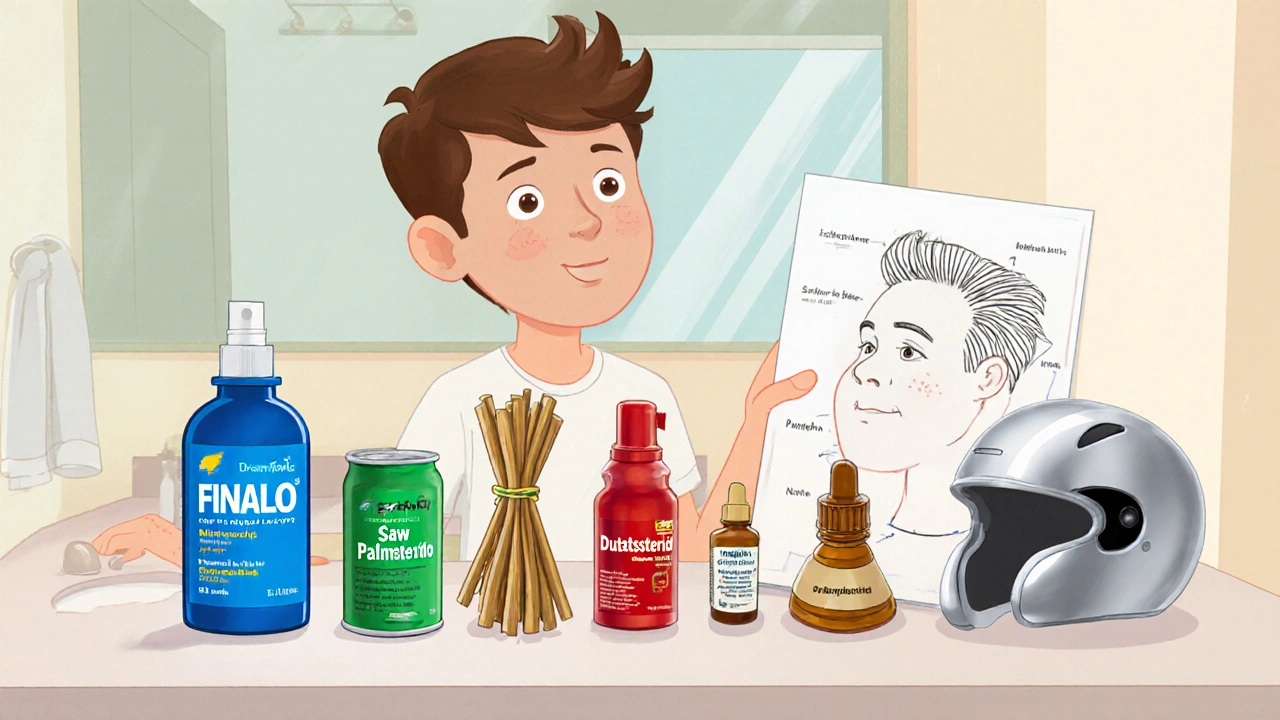Finasteride: Uses, Risks, and Practical Tips
When working with Finasteride, a prescription 5‑alpha‑reductase inhibitor that lowers dihydrotestosterone levels. Also known as Propecia, it is used to manage conditions driven by excess DHT. Finasteride is most famous for slowing hair loss, the thinning or shedding of scalp hair that often results from DHT‑induced follicle miniaturization. At the same time, it helps shrink the gland in benign prostatic hyperplasia, a non‑cancerous prostate enlargement that leads to urinary difficulty. The drug works because it blocks the enzyme that converts testosterone into dihydrotestosterone, a potent androgen hormone that fuels both hair follicle shrinkage and prostate growth. In short, Finasteride treats hair loss, inhibits dihydrotestosterone, and eases BPH symptoms – a clear three‑way benefit chain.
Key Considerations When Starting Finasteride
First, dosage matters. For male‑pattern baldness, a 1 mg daily tablet is typical, while BPH treatment uses 5 mg per day. Adjusting the dose changes how much DHT is suppressed, which in turn influences both hair regrowth speed and prostate size reduction. Second, side effects are tied to hormone changes. Some users report reduced libido, mild erectile difficulty, or occasional mood shifts; these usually fade after a few weeks or with dose tweaks. Third, the drug’s impact on pregnancy is critical – women who are pregnant or may become pregnant must avoid any contact with crushed or broken tablets, as DHT interference can harm a male fetus’s development. Lastly, monitoring is essential: a baseline PSA (prostate‑specific antigen) test helps track prostate health, and periodic blood work checks liver function, especially for the higher BPH dose.
Beyond the basics, many people wonder how Finasteride fits into broader health plans. It pairs well with topical minoxidil for hair loss, giving a two‑pronged attack: minoxidil boosts blood flow to follicles while Finasteride cuts DHT supply. For BPH, lifestyle tweaks like reduced caffeine, regular pelvic exercises, and staying hydrated can boost the medication’s effect. Some patients also explore natural DHT‑blocking supplements, but it’s wise to discuss those options with a doctor to avoid unwanted interactions. Knowing the interplay between hormone levels, lifestyle, and medication empowers you to get the most out of Finasteride.
Armed with this overview, you’re ready to dive into the detailed articles below. They cover everything from clinical studies and dosage charts to real‑world user experiences, giving you a full toolbox to manage hair loss or prostate concerns safely and effectively.

Finalo (Finasteride) vs Other Hair Loss Treatments: Full Comparison
A detailed side‑by‑side comparison of Finalo (finasteride) with minoxidil, dutasteride, hair transplant, and natural alternatives, covering how they work, costs, effectiveness, and how to choose the right option.